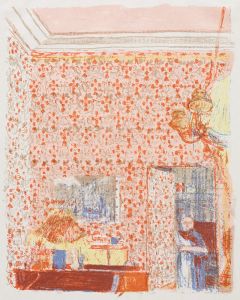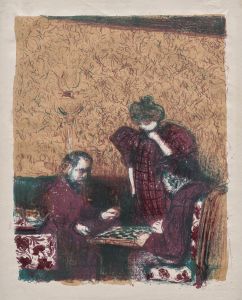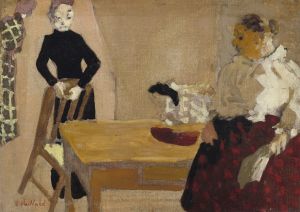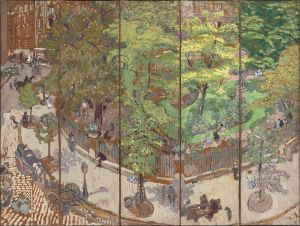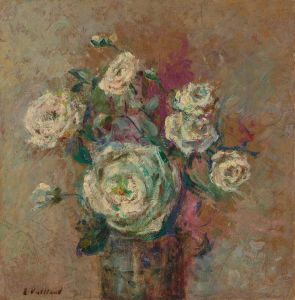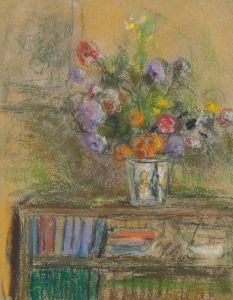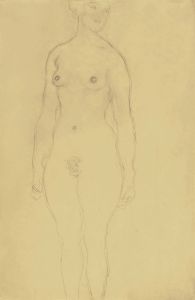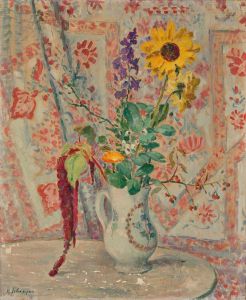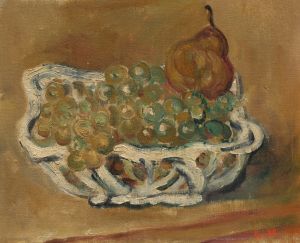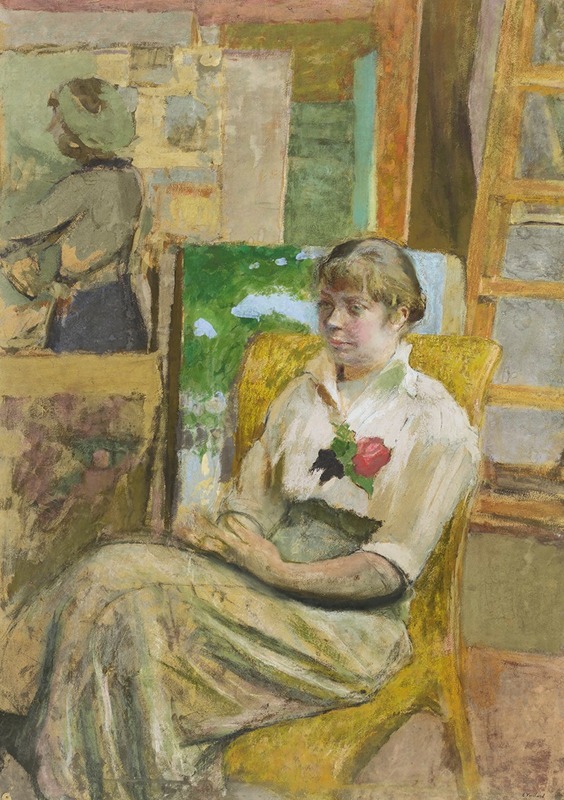
Le modèle à la rose
A hand-painted replica of Édouard Vuillard’s masterpiece Le modèle à la rose, meticulously crafted by professional artists to capture the true essence of the original. Each piece is created with museum-quality canvas and rare mineral pigments, carefully painted by experienced artists with delicate brushstrokes and rich, layered colors to perfectly recreate the texture of the original artwork. Unlike machine-printed reproductions, this hand-painted version brings the painting to life, infused with the artist’s emotions and skill in every stroke. Whether for personal collection or home decoration, it instantly elevates the artistic atmosphere of any space.
Édouard Vuillard, a prominent French painter associated with the Nabis group, created "Le modèle à la rose" in 1918. This painting is a testament to Vuillard's distinctive style, characterized by intimate domestic scenes and a subtle use of color and pattern. Vuillard's work often blurs the boundaries between the subject and the background, creating a tapestry-like effect that draws the viewer into the scene.
"Le modèle à la rose" depicts a woman, presumably a model, holding a rose. The painting captures a moment of quiet introspection, with the model's gaze directed away from the viewer, adding a sense of mystery and contemplation. Vuillard's use of soft, muted colors and intricate patterns is evident in this work, reflecting his interest in the decorative arts and his ability to integrate figures harmoniously into their surroundings.
Vuillard was known for his ability to convey the psychological depth of his subjects, often portraying them in familiar, everyday settings. This approach is evident in "Le modèle à la rose," where the model's serene expression and the intimate setting suggest a personal and introspective moment. The rose, a central element in the composition, may symbolize beauty, transience, or a personal connection, though Vuillard leaves its interpretation open to the viewer.
The painting is a fine example of Vuillard's mature style, which evolved from his early association with the Nabis group. The Nabis, a group of avant-garde artists in the late 19th and early 20th centuries, were influenced by Symbolism and sought to break away from traditional academic art. They emphasized the importance of color, pattern, and the emotional impact of a painting, principles that are evident in Vuillard's work.
Vuillard's technique often involved the use of distemper, a type of paint made by mixing pigments with a binding agent such as glue. This medium allowed him to achieve the matte, velvety textures that are characteristic of his paintings. In "Le modèle à la rose," the use of distemper contributes to the softness and subtlety of the color palette, enhancing the painting's intimate and contemplative mood.
Throughout his career, Vuillard maintained a close connection with the world of theater and the decorative arts, which influenced his approach to composition and design. His paintings often resemble stage sets, with carefully arranged elements that create a sense of depth and narrative. In "Le modèle à la rose," the interplay of patterns and textures creates a rich visual experience, inviting the viewer to explore the details of the scene.
Vuillard's work, including "Le modèle à la rose," is celebrated for its ability to capture the nuances of human emotion and the beauty of everyday life. His paintings offer a glimpse into the private, often overlooked moments that define personal experience. "Le modèle à la rose" stands as a testament to Vuillard's skill as a painter and his unique vision, which continues to resonate with audiences today.
The painting is part of the collection at the Musée d'Orsay in Paris, where it is appreciated by visitors from around the world. Vuillard's legacy as a master of intimate, atmospheric scenes endures, and "Le modèle à la rose" remains a significant example of his contribution to modern art.





